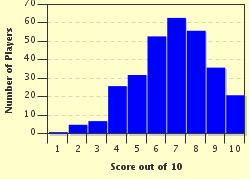Quiz Answer Key and Fun Facts
1. James Garfield, the 20th U.S. President, was assassinated while in office. Who was the assassin?
2. Some wars go on and on as in the Hundred Years' War which actually lasted 116 years. Then there's the shortest war in history that lasted a grand total of 38 minutes. Name this very short war.
3. Spiral-shaped structures, which have baffled scientists until recently, are located in southern Peru. What do the Peruvians call these rock-lined structures, found in the area of the mysterious Nazca Lines?
4. In August 1981, U.S. President Ronald Reagan fired over 11,000 striking workers. They had refused to return to work despite orders by the President to do so. Which group of workers were fired?
5. In 1940, the early years of World War II, Hitler planned to invade Great Britain from the south. What was the name of this operation?
6. In which U.S. state was the first transcontinental railroad completed?
7. During the 16th and 17th centuries, what name was given to French Protestants?
8. Earth Day was first celebrated on April 22, 1970. Who was its founder?
9. Ownership of the Falkland Islands in the South Atlantic ocean had long been disputed. The dispute led to a war between two countries in 1982. Which two countries claimed the Falklands?
10. Methyl isocyanate (MIC) is a highly toxic gas. When not properly contained, it can be deadly. In 1984, MIC leaked from an industrial plant in a densely populated city in India, resulting in thousands of deaths and long-term disabilities. In which city did this disaster occur?
Source: Author
nmerr
This quiz was reviewed by FunTrivia editor
bloomsby before going online.
Any errors found in FunTrivia content are routinely corrected through our feedback system.


